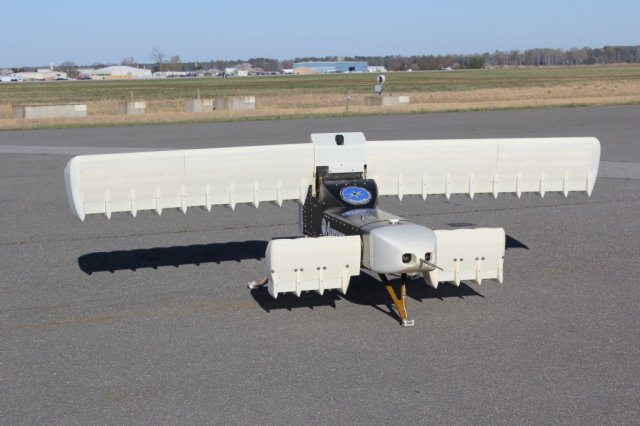 Aurora’s XV-24A LightningStrike
Aurora’s XV-24A LightningStrike
Vertical Take-off and Landing (VTOL) XPlane subscale vehicle demonstrator (SVD) aircraft completed its planned flight test program in early March at Webster Outlying Field in Southern Maryland.
Funded by the Defense Advanced Research Projects Agency (DARPA), the SVD successfully demonstrated key technical features the full-scale XV-24A will perform, including outbound and inbound transition flight. The SVD aircraft is a 325 pound, Lithium battery powered scale model of the 12,000 pound, 61 foot wingspan XV-24A. It will remain in flight status to supplement the full-scale XV-24A flight test program, currently scheduled to begin in late 2018.
“We have pursued, developed and flown an extraordinary aircraft and matured key and innovative technologies in support of the future of vertical flight,” said Aurora Founder and CEO John Langford. “This is clearly an achievement like no other, and will be surpassed only by the flight of the full-scale aircraft.”
Aurora’s LightningStrike VTOL X-Plane was recently designated the XV-24A by DARPA and the U.S. Air Force. The XV-24A is a tilt-wing unmanned aerial vehicle powered by an Electric Distributed Propulsion (EDP) system. Twenty four variable-pitch ducted fans driven by electric motors provide thrust for both hover and cruise. A single Rolls-Royce AE 1107C turboshaft engine – used on the V-22 Osprey – drives three Honeywell generators which provide power to the wing and canard electric motors.
The XV-24A is being developed with the goal of achieving a top sustained flight speed of 300 – 400 knots, with 15% increase in hover efficiency and a two-fold increase in speed over helicopters. It will be the first aircraft in aviation history to demonstrate distributed hybrid-electric propulsion using an innovative synchronous electric-drive system.
Source: Press Release
